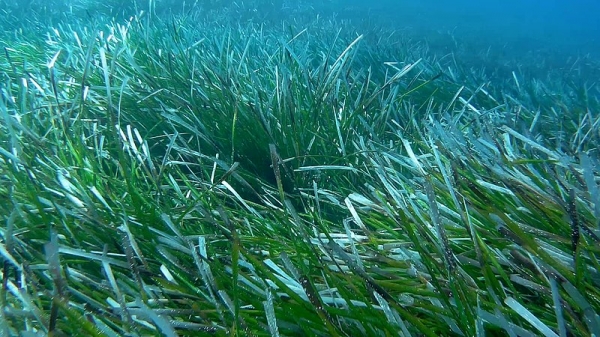Seagrass beds are underwater oases. Now researchers have discovered vast amounts of sugars underneath seagrass meadows. This sheds new light on how plants store carbon in the ocean.
Scientists from the Max Planck Institute for Marine Microbiology now report that seagrasses release large amounts of sugar, largely in the form of sucrose, into their soils – worldwide more than 1 million tons of sucrose, enough for 32 billion cans of coke. Such high concentrations of sugar are surprising. Normally, microorganisms quickly consume any free sugars in their environment. The scientists found that seagrasses excrete phenolic compounds, and these deter most microorganisms from degrading the sucrose. This ensures that the sucrose remains buried underneath the meadows and cannot be converted into CO2 and returned to the ocean and atmosphere. They now describe their discovery in the journal Nature Ecology & Evolution.
Seagrasses form lush green meadows in many coastal areas around the world. These marine plants are one of the most efficient global sinks of carbon dioxide on Earth: One square kilometer of seagrass stores almost twice as much carbon as forests on land, and 35 times as fast. Now scientists from the Max Planck Institute for Marine Microbiology in Bremen, Germany, have discovered that seagrasses release massive amounts of sugar into their soils, the so-called rhizosphere. Sugar concentrations underneath the seagrass were at least 80 times higher than previously measured in marine environments. “To put this into perspective: We estimate that worldwide there are between 0.6 and 1.3 million tons of sugar, mainly in the form of sucrose, in the seagrass rhizosphere”, explains Manuel Liebeke, head of the Research Group Metabolic Interactions at the Max Planck Institute for Marine Microbiology. “That is roughly comparable to the amount of sugar in 32 billion cans of coke!”
Read more at Max Planck Institute for Marine Microbiology
Photo credit: Milorad Mikota via Wikimedia Commons


